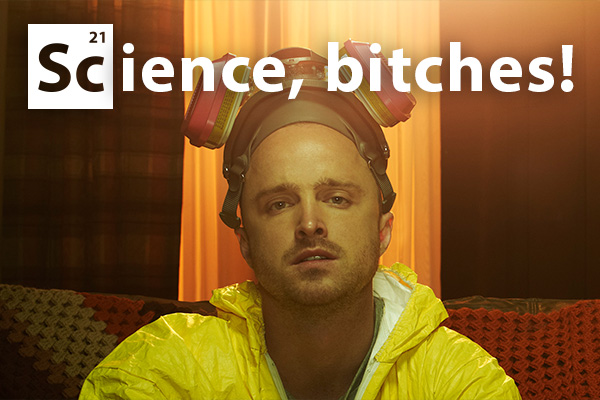Science, Bitches! | Issue 06
Tastes Like Science
As well as your taste buds, your tongue has nerve endings that can detect pain and heat. You are probably reminded about this when you accidentally bite your tongue, or drink your tea when it’s still boiling hot. The “hot” ingredient in chillies is a compound called capsaicin, and what’s interesting about capsaicin is that it can bind to a receptor on one of these heat-sensing nerves, causing the nerve to send a signal to the brain telling it that the food in your mouth is “hot.” But as you’ll probably realise, the chilli you may have bitten in to could be at room temperature. Heck, if you eat a frozen chilli you’ll still get the “hot” sensation in your mouth and want to reach for a glass of ice cold water. These nerve endings aren’t just on your tongue either, as you may have discovered already if you’ve ever rubbed your eye after cutting a chilli.
The same idea occurs when you eat something minty. Have you ever brushed your teeth, or chewed gum then had a glass of water? The water feels ice-cold in your mouth. The menthol – which gives that minty taste, can bind to a different receptor, telling your brain that it can detect cold – even though the minty thing you ate wasn’t cold at all! Again, this isn’t just on your tongue. If you’ve ever used Anti-Flamme or other skin creams with mint extracts, you’ll notice the same cooling sensation on your skin.
Scientists are currently working on trying to trick your taste buds – to try and make foods healthier, yet still taste great. As you may already know, there are a number of types of taste we can easily distinguish – sweet, salty, bitter, sour, and one defined more recently: umami (which essentially means savoury). Humans love food that is high in fats, salt and sugar. Removing fat, for example, also affects the flavour. From an evolutionary perspective it makes sense to love the taste of fat-rich food; if you may face periods of starvation, having more energy-rich foods will help you get through. But in today’s society we don’t have to go out and hunt for our food. We can just hop in our car and hit the drive-through.
The idea behind tricking our taste buds is giving us the sensation we crave – sweetness, saltiness, the texture and flavour associated with fats. Sometimes there are easier ways of doing this: if salt is ground finer, and the salt granules are more pyramidal in shape, the tongue detects more saltiness. This means you can add less, reducing how much you consume in the first place. Other ways involve testing other compounds – synthetic or natural – on taste buds grown in a lab to see if we can get the same responses. For example the taste buds detect sweeteners such as aspartame or stevia the same way they detect sugars!
This is all down to science, bitches!



